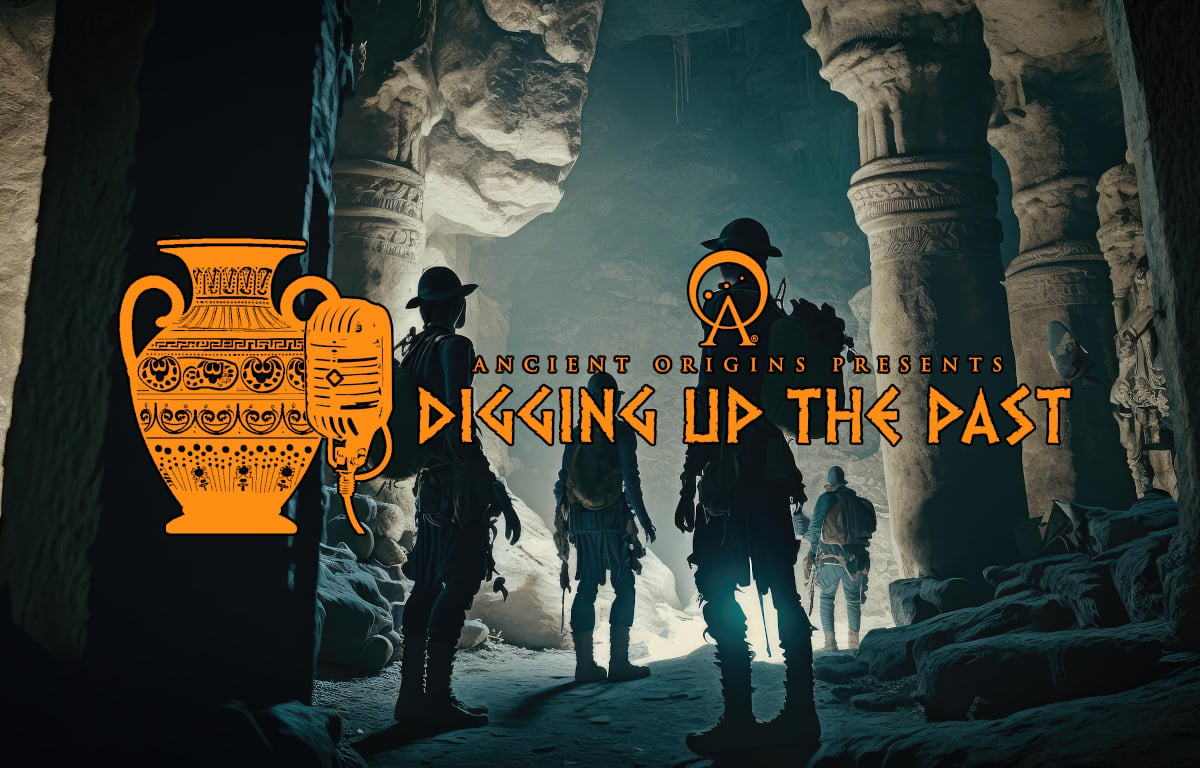
Podcast: Digging Up The Past: Episode 23: In Search of Lost Egyptian Tombs
Episode Description
In this episode, we sit down with Egyptologist, Dr. Chris Naunton, to discuss his book, Searching for the Lost Tombs of Egypt. What has the archaeological evidence revealed to identify the final resting places of important historical figures such as Imhotep, Alexander the Great, Cleopatra, and more? We also talk about Egyptology as a whole, the Pharaoh Tutankhamun, the end of the New Kingdom and Late Intermediate Period, and more.
About the Guest
Dr. Chris Naunton is a British Egyptologist, a writer and a broadcaster. He studied Egyptology at the universities of Birmingham and Swansea, where he obtained his PhD. Dr. Naunton has also been the director of the Egypt Exploration Society and the president of the International Association of Egyptologists.
He is the author of numerous books which includes Searching for the Lost Tombs of Egypt and Egyptologists’ Notebooks and has been involved with numerous ancient Egyptian focused documentaries.
For more information, you can visit his website: http://www.chrisnaunton.com.
Excerpt
Petros: The first individual that you talked about was Imhotep, I believe.
Chris: Yeah, that's right. Imhotep.
Petros: Okay, yeah. Here's the thing about Imhotep that I found interesting. In my entire life of studying on my own personal time, studying Egypt and Egyptian history, I always placed into the realm of myth and legend. Because it's one of those things that... It reminds me of like Homer and his... and his heroes in the Iliad. Sure, excavations in Anatolia have discovered tablets at the Hittite site of Hattusa where we find mentions of a Priam or an Alexander or an Atreus and so forth. So we have documented evidence of these characters at a certain point in time, but the stories around them you know, for all we know, are completely fabricated and mythological. And I always just assume the same thing about Imhotep. Why do we think otherwise? Why do we think that there's an actual Imhotep that was buried and not just a creation during what? During like the third dynasty, I believe it was.
Chris: Yeah, he would have been, yeah. So because we have evidence from Third Dynasty contexts mentioning somebody with exactly this name, and in fact some of the much later texts also record that he was a contemporary of King Djoser, so, you know, if we only had, and so to explain, you're kind of right. He's a bit of both a real life historical person, but also kind of a myth. And he becomes best known and most important from 2,000 years after his own time, by which point there are lots of... He's treated more or less as a god and there are lots of texts mentioning him, lots of activity connected with the worship of this person.
So if we had only that, then you would think, well, it's probably just made up, isn't it? But some of those texts mention... The beginning of the third dynasty, King Djoser. And we know the step pyramid, the single sort of most largest, the dominant monument at Saqqara, which is a cemetery site in Egypt that was used for generations and generations. That step pyramid is identifiably the pyramid of, of Joseph. His name drops up over and over again. And in amongst material found in and around the step pyramid, we find mention of Imhotep. And when, when his name is mentioned, it's on material that dates to, and is found with material dating to the time of King Joseph.
And, and, much later histories, in particular the history of Manetho, which is, again, it's written a long time after Imhotep's time, but it describes Imhotep as being the inventor of building in cut stone. And the Step Pyramid is the first monumental building, as far as we know, to be built in cut stone in Egypt. So it's the first pyramid, but it's also the first monument of any kind to be made substantially of stone. So again, you might think, well, how on earth could Manetho, writing 2,000 years later, more than 2,000 years later, how on earth could he know that Imhotep is the inventor of building in cut stone. Well, you know, we have somebody who has exactly that name, whose name is very closely associated with Djoser. We know that the step pyramid was the tomb of King Djoser. What are the chances? It looks like, you know, this evidence of a third dynasty person called Imhotep, this is indeed the very same person. And sure, you know, some of those stories are, that attach themselves to Imhotep, such as that he was the inventor of building and cut stone, we can't be absolutely sure that that's quite right.




